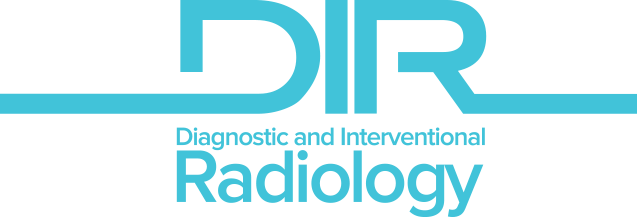ABSTRACT
PURPOSE:
We aimed to report a single center’s experience on endovascular treatment of true renal artery aneurysms (TRAAs), including treatment techniques and outcomes.
METHODS:
This retrospective study was designed to evaluate the treatment and follow-up of TRAAs treated by a variety of endovascular interventional techniques over a period of 6 years. Six patients with nine TRAAs were identified; seven of the TRAAs were treated using different combinations of coil embolization and flow diverter stents. The clinical findings, aneurysm characteristics, endovascular methods and treatment outcomes were reported.
RESULTS:
Seven TRAAs of six patients were treated, with a median aneurysm size of 20 mm. Three TRAAs were treated with primary sac occlusion (one with primary coil embolization, one with balloon and stent assisted coil and glue embolization, and one with amplatzer vascular occlusion device and coil embolization). The remaining four TRAAs of three patients were treated with flow diverter stents (Cardiatis, Silk, Pipeline, and Surpass). Immediate clinical success was achieved in patients treated with primary sac embolization (95% CI, 29.2%–100%). Among patients treated with flow diverter stents, one patient required an additional flow diverter at 6-month follow-up. The occlusion time in flow diverters ranged from 1 month to 12 months (median, 3.5 months) taking the repeat procedure into account. In patients treated with flow diverters, the clinical success rate was 100% (95% CI, 29.2%–100%) at one-year follow-up. Long-term follow-up ranged from 3 to 52 months. One intraprocedural complication was encountered with a flow diverter during deployment, which required additional stenting and tirofiban infusion. No other major complication was seen.
CONCLUSION:
Endovascular treatment is an effective and safe method offering high success rates and low morbidity in the treatment of TRAAs and may supplant surgery as the primary therapy. Current experience in the use of flow diverter stents in TRAAs is limited to individual case reports with one brand of flow diverter device. Our small numbered series of four TRAAs shows our experience regarding endovascular treatment with different flow diverter brands.



